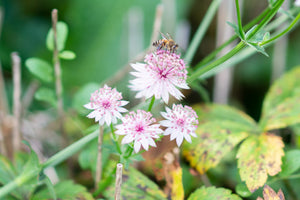Bees are fascinating creatures that play a critical role in our ecosystem. They pollinate flowers, which in turn, produce fruit and vegetables that feed both humans and wildlife. The life span of a bee is not very long, but they play an important role in the survival of their colony. In this post, we will take a closer look at the average lifespan of different types of bees and why it is important to understand their biology.
The lifespan of a bee depends on several factors, including species, sex, and role within the colony. Honeybees are the most well-known type of bee, and their average lifespan ranges from a few weeks to a few months. Worker bees, which are female, live the shortest lives, usually between four to six weeks. During this time, they are responsible for gathering nectar, pollen, and water to bring back to the colony. After they reach adulthood, worker bees also take care of the larvae, clean the hive, and defend the colony from predators.
Male drones, on the other hand, live slightly longer, with an average lifespan of around eight weeks. Their main purpose is to mate with a queen bee from another colony, after which they die. The queen bee is the longest-living member of the colony and can live for several years, often up to three or four years.
Other species of bees have varying lifespans, with solitary bees such as bumblebees and mason bees living for a few months, while carpenter bees can live for up to a year.
It is important to understand the life cycle of bees because they are facing many threats, including habitat loss, disease, and pesticide use. The decline in bee populations has been a major concern in recent years, with many species facing extinction. By understanding their biology and lifespan, we can work to protect their habitats and promote conservation efforts to help preserve their populations.
Bees play a vital role in pollination, which is the transfer of pollen from the male reproductive part of a plant to the female reproductive part. This process is essential for the reproduction of many plants, and without it, our food supply would be severely impacted.
The decline in bee populations is not just a problem for the bees, but for us as well. It is estimated that one in every three bites of food we eat is made possible by pollination, and without it, our diets would be limited and our food supply would become more expensive.
In conclusion, the lifespan of a bee varies depending on species, sex, and role within the colony, with the average lifespan ranging from a few weeks to a few months for most bees. It is important to understand their biology and protect their habitats to help preserve their populations, as their role in pollination is crucial for our food supply. By promoting conservation efforts, we can ensure that bees will continue to play a critical role in our ecosystem for many years to come.


